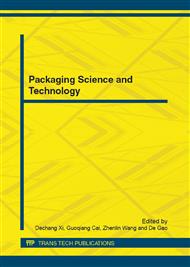p.186
p.190
p.194
p.199
p.203
p.207
p.216
p.220
p.226
Prediction of Bending Creep Behavior of Rice Hull Flour/Polypropylene Composite
Abstract:
The creep behaviors of rice hull flour/PP composite under different stress levels were studied through bending test. The results show that the bending creep behaviors of rice hull flour/PP composite have obviously correlation to the stress levels. Based on the time-temperature-stress equivalence principle and 15% stress level as a reference, the creep compliance master curve of 15% stress level was constructed by horizontally shift the creep compliance curve of other stress levels, which can predict the creep behavior of rice hull flour/PP composite at the 15% stress level.
Info:
Periodical:
Pages:
203-206
Citation:
Online since:
October 2012
Authors:
Price:
Сopyright:
© 2012 Trans Tech Publications Ltd. All Rights Reserved
Share:
Citation:


